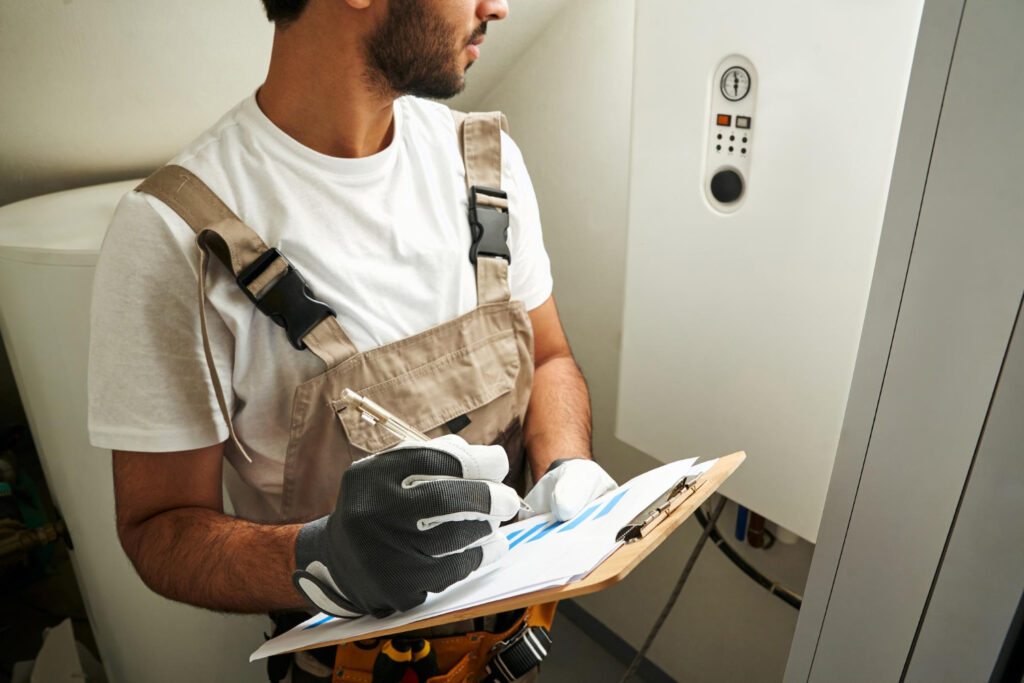Having a reliable heating system in your home is crucial for maintaining comfort throughout the colder months. Over time, even the most robust heating systems can show signs of wear and may need to be replaced. Understanding when it’s time for a heating replacement can save you money and prevent an unexpected breakdown.
Signs It’s Time for a Heating Replacement
Knowing when it’s time to replace your heating system can save you from enduring cold nights or dealing with emergency repairs. One major sign is the age of your system. If your heating system is over 15-20 years old, it might be nearing the end of its operational lifespan. Older systems often have more frequent issues and decreased efficiency, making replacement a sensible option.
Another indication is the rising cost of repairs. If you find yourself constantly calling for furnace repair or heating repair services, it might be more cost-effective in the long run to invest in a new heater replacement. Frequent breakdowns not only cause inconvenience but also add up in repair costs, making a heating replacement a more economical choice.
Decreased efficiency and higher energy bills are also tell-tale signs. If your heating bills are rising without an increase in usage, it can indicate that your system is working harder to provide the same level of comfort. Inefficient heating systems waste energy, and replacing them with a more modern, efficient model can help reduce your energy bills and improve your home’s comfort.
Choosing the Right Heating System
Selecting the right heating system for your home can be overwhelming, but making an informed decision ensures long-term comfort and efficiency. The first step is to assess your home’s heating needs. Consider factors like the size of your home, the number of rooms, and your insulation quality. Our professionals can help you calculate the heating load to ensure you choose a system that meets your specific requirements.
There are various types of heating systems available, including furnaces, heat pumps, and boilers. Each system has its advantages and is suitable for different needs. For instance, furnaces are common and efficient at providing consistent warmth, while heat pumps can both heat and cool your home, offering versatility. Our technicians can guide you through the pros and cons of each system to help you make the best choice.
Energy efficiency should also be a top consideration. Look for systems with high efficiency ratings, which can save you money on energy bills in the long run. Modern systems often come with advanced features, such as programmable thermostats and variable-speed motors, which improve both efficiency and comfort.
The Heating Installation Process
The heating installation process involves several crucial steps to ensure your new system functions efficiently and safely. First, our professionals will conduct a thorough assessment of your home to determine the best location for installing your new heating system. This assessment includes evaluating your existing ductwork, electrical connections, and overall layout to ensure a smooth installation.
After planning, the old heating system, if any, is removed carefully to make room for the new one. This step often involves disconnecting the old unit, removing it safely, and preparing the space for the new heating system. Our technicians handle this process meticulously to prevent any damage to your home and to ensure all components are correctly disposed of.
Next, the actual installation of the new heating system takes place. This involves mounting the new unit, connecting it to your home’s ductwork and electrical systems, and testing it to ensure it operates correctly. Our professionals will also calibrate the new system to match your home’s unique heating needs, ensuring optimal performance. Finally, they will explain the operation and basic maintenance requirements of your new heating system, so you feel confident using it.
Post-Installation Tips and Maintenance
After your new heating system is installed, proper maintenance is essential to keep it running efficiently. Regular heating maintenance helps identify potential issues before they become significant problems, ensuring your system remains reliable and efficient. Our technicians recommend scheduling annual maintenance checks to keep your system in top shape.
One of the first steps in post-installation maintenance is checking and replacing air filters regularly. Dirty filters reduce airflow, forcing your heating system to work harder and reducing its efficiency. Clean or replace these filters every 1-3 months to ensure smooth operation.
It is also important to keep the area around your heating system clear of any obstructions. This helps maintain proper airflow and prevents potential fire hazards. Regularly inspect the vents, ducts, and other components of your heating system for any signs of wear or damage. Immediate heating repair of minor issues can prevent costly breakdowns later.
Conclusion
Understanding the heating replacement process, from identifying signs that it’s time for a heater replacement to choosing the right system, ensures a seamless transition to a more efficient and dependable heating solution. Following the correct installation procedures and adhering to regular post-installation maintenance can significantly enhance the performance and longevity of your new heating system.
For expert guidance and service in heating replacement in Stafford, heating installation, and ongoing maintenance, contact Fintastic Cooling & Heating today. Let our experienced technicians help you keep your home comfortable all year round!



